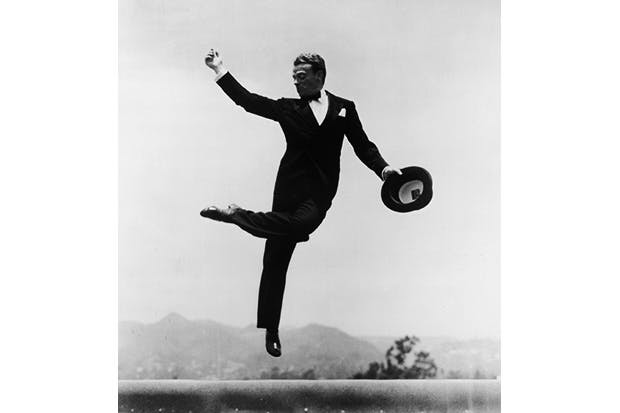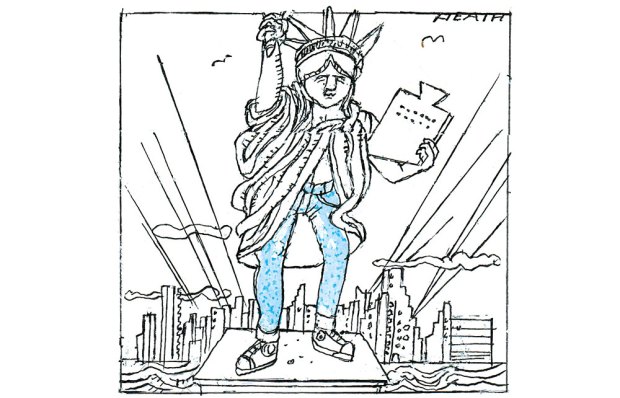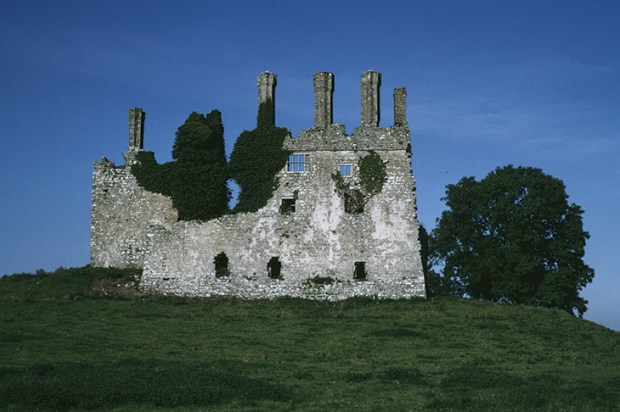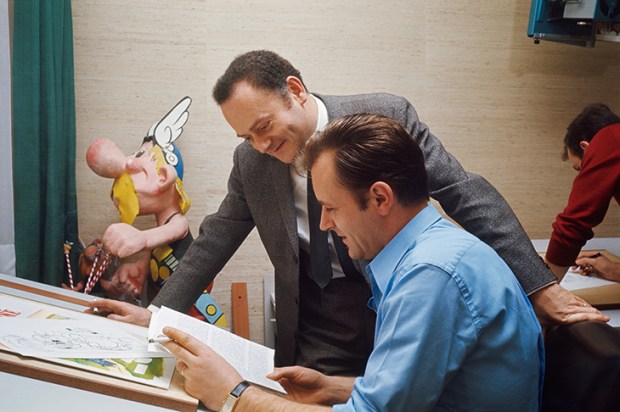Men don’t look good in black tie. They might think that they look like Sean Connery in Dr No, but they end up looking like David Brent at the Wernham-Hogg annual Christmas do.
Black tie doesn’t lend parties glamour; it just makes them depressing. The one good thing about black tie is that it is an invariably reliable pointer to a terrible evening.
Agonising teenage balls, with adolescents clashing braces in dark corners? Black tie. Boorish sports club dinners at university? Black tie. Prize-giving evenings in cavernous hotel ballrooms? Black tie. Business conventions with an after-dinner speech by Jeffrey Archer? Black tie.
The words ‘black tie’ on an invitation hope to raise the spirits with suggestions of luxury and class. In fact, they promise warm, acrid champagne, industrial quantities of hors d’oeuvres and a sickly, hollow feeling at the end of the evening.
The faults of black tie were built into the costume from the beginning. Black tie is the centaur of men’s clothes — the ungainly meeting point of two sartorial animals who have never got on. In about 1885, that old dandy Edward VII swapped his tailcoat for a blue silk smoking jacket with matching trousers, made by Henry Poole of Savile Row. It was a relaxed alternative at Sandringham to the formality of evening tails. It was Edward VII’s inspired relaxation of 19th-century fashions that led to the genius of today’s everyday suits. The problem with the evening version — which eventually morphed into black tie — is that it clung on to some of the formal accoutrements of tails.
The shirt’s winged collar survived from the evening tails look. So did the bow tie, a descendant of Beau Brummell’s early–19th-century cravat. You ended up with an outfit that pulled in two directions: one looking forwards to the relaxed 20th century, the other back to the fogeyish 1800s.
The collision is even uglier when extra formalities are piled on top: frothy or slatted shirts, shirt studs and, God save us, the cummerbund, borrowed by British military officers from Indian fashion in empire days.
It all becomes completely unbearable when this half-formal mermaid of an outfit is clumsily lightened up with a splash of colour. Remember those terrible novelty white shirts with garishly coloured arms popular with Sloanes in the late 1980s? The arms stayed mercifully hidden until the Sloanes ripped off their dinner jackets after dinner, to boogie to ‘I Will Survive’. Fortunately those shirts are long gone, but people still try to cheer up black tie with brightly coloured bow ties. That doesn’t work, either.
As for the white dinner jacket, let’s just pass over it in mournful, unrespectful silence. No one since Elvis has pulled off a white suit. Why should a white jacket with black trousers look any better? Barry Manilow? I rest my case.
In fact, the only time black tie works is when the bow tie is removed altogether — and then only because the dinner jacket and trousers come closest to looking like that sublime creation, the traditional British suit.
Partygoers of the world, unite! Get rid of black tie now! You have nothing to lose but your dickie bows.
Got something to add? Join the discussion and comment below.
Get 10 issues for just $10
Subscribe to The Spectator Australia today for the next 10 magazine issues, plus full online access, for just $10.














Comments
Don't miss out
Join the conversation with other Spectator Australia readers. Subscribe to leave a comment.
SUBSCRIBEAlready a subscriber? Log in